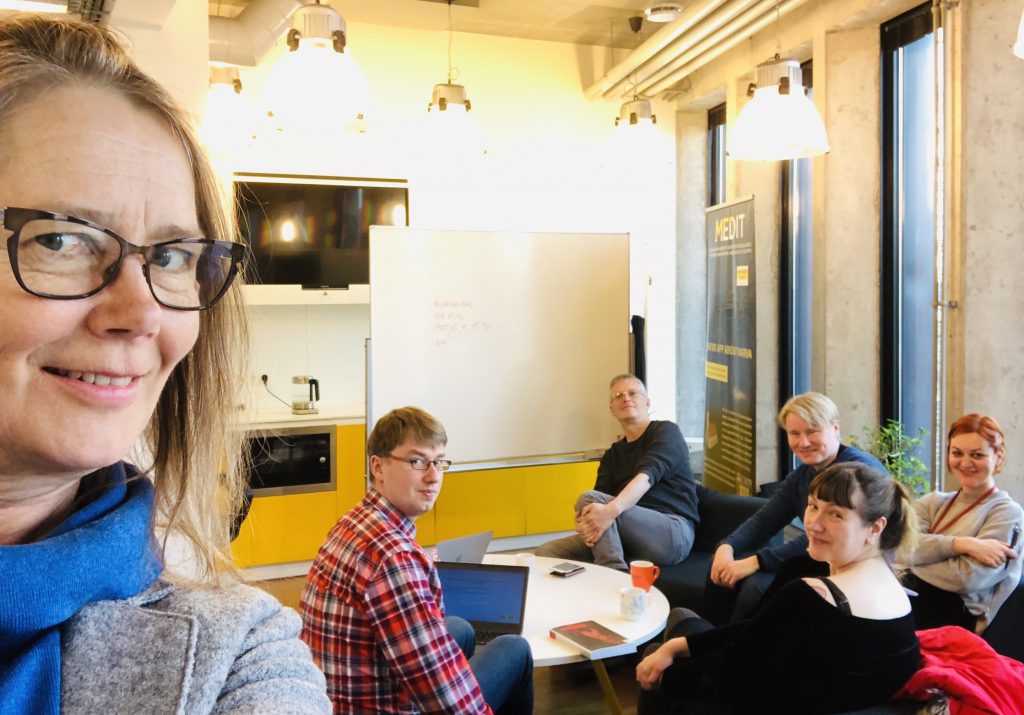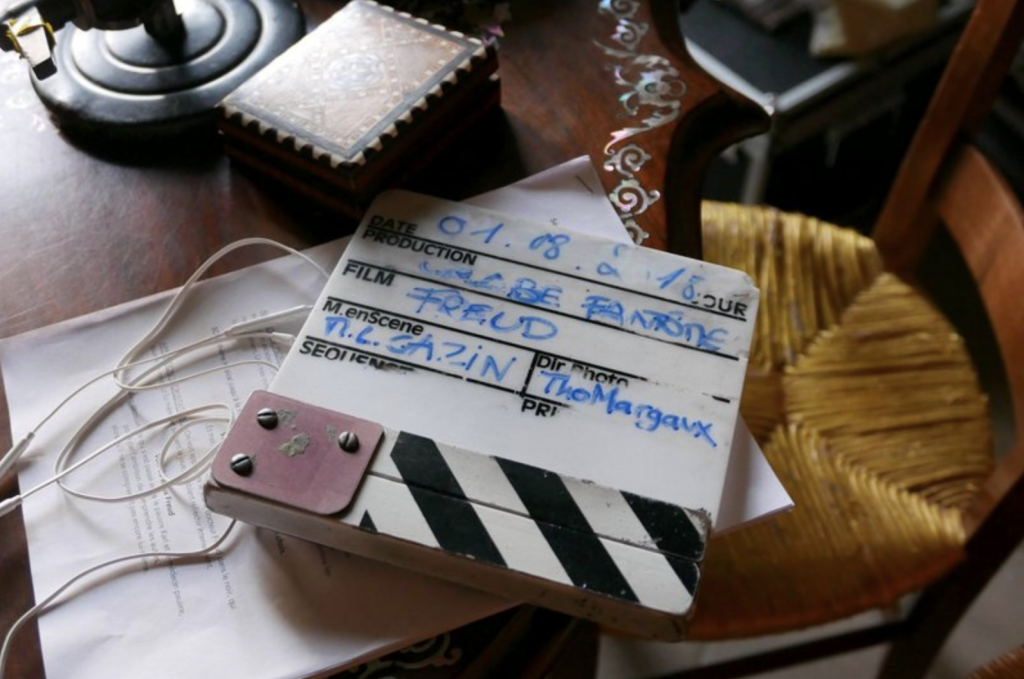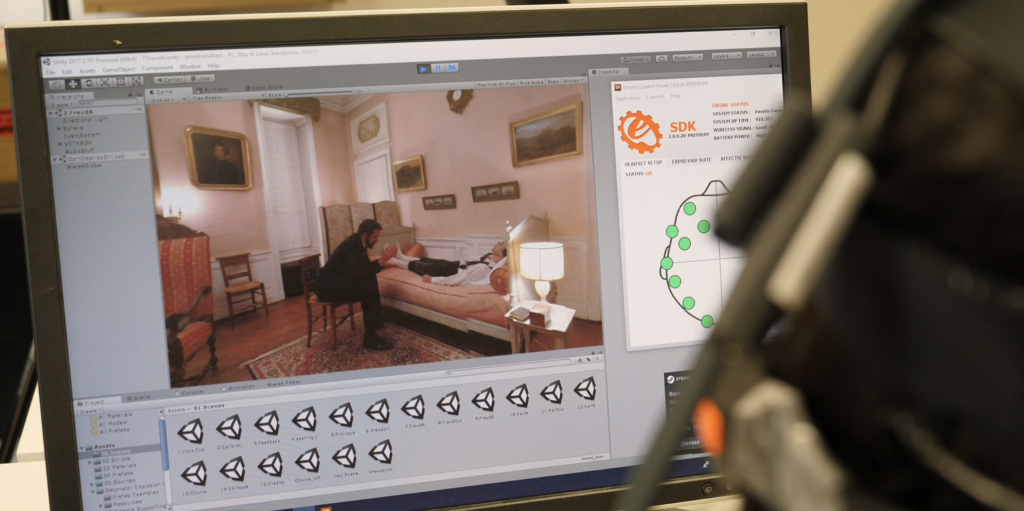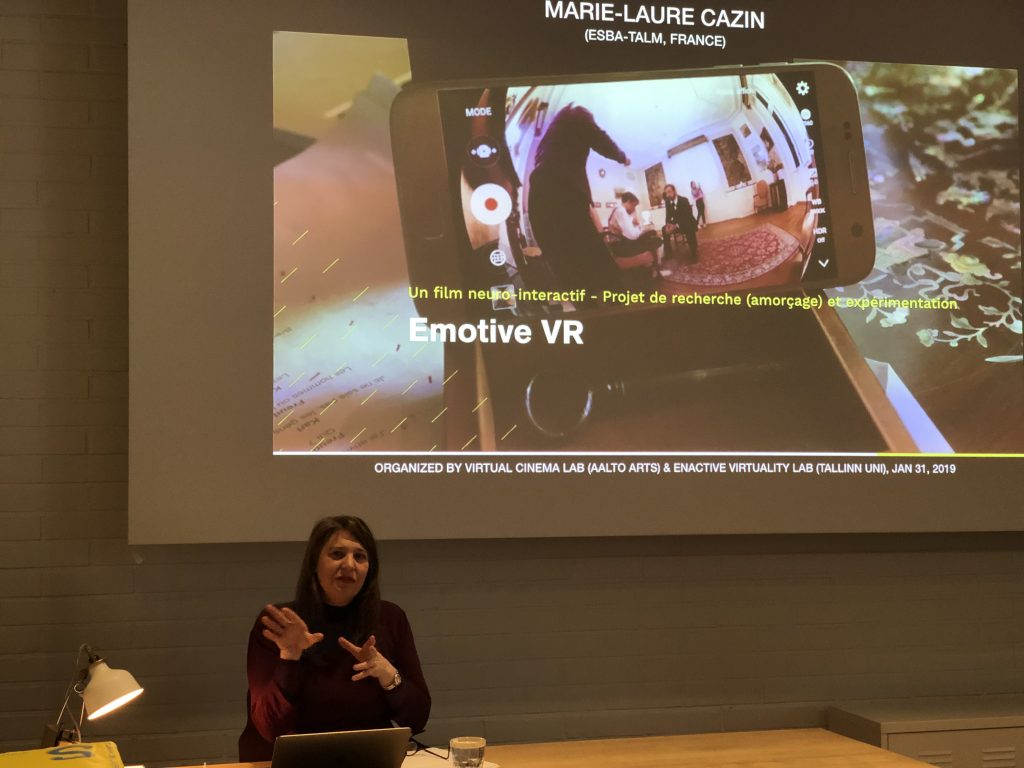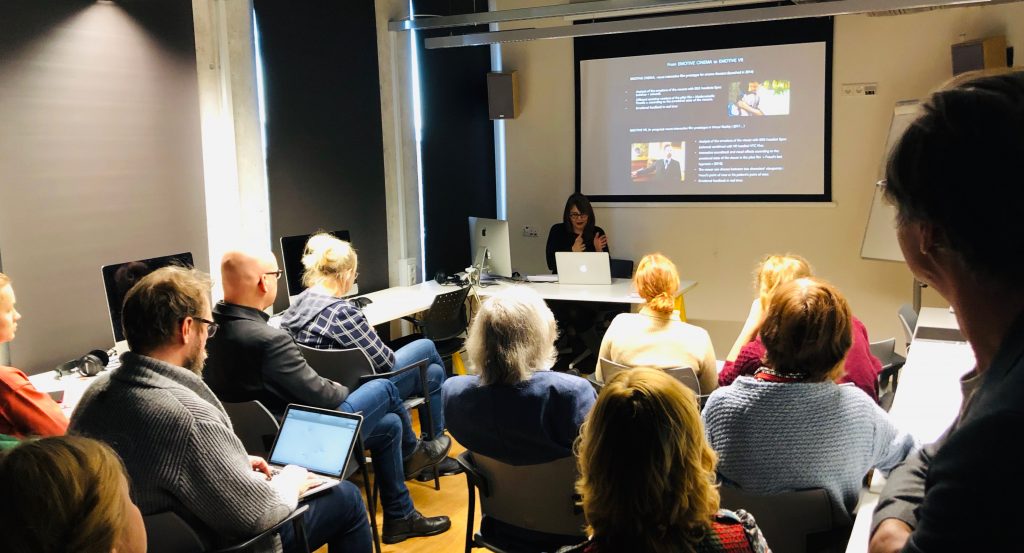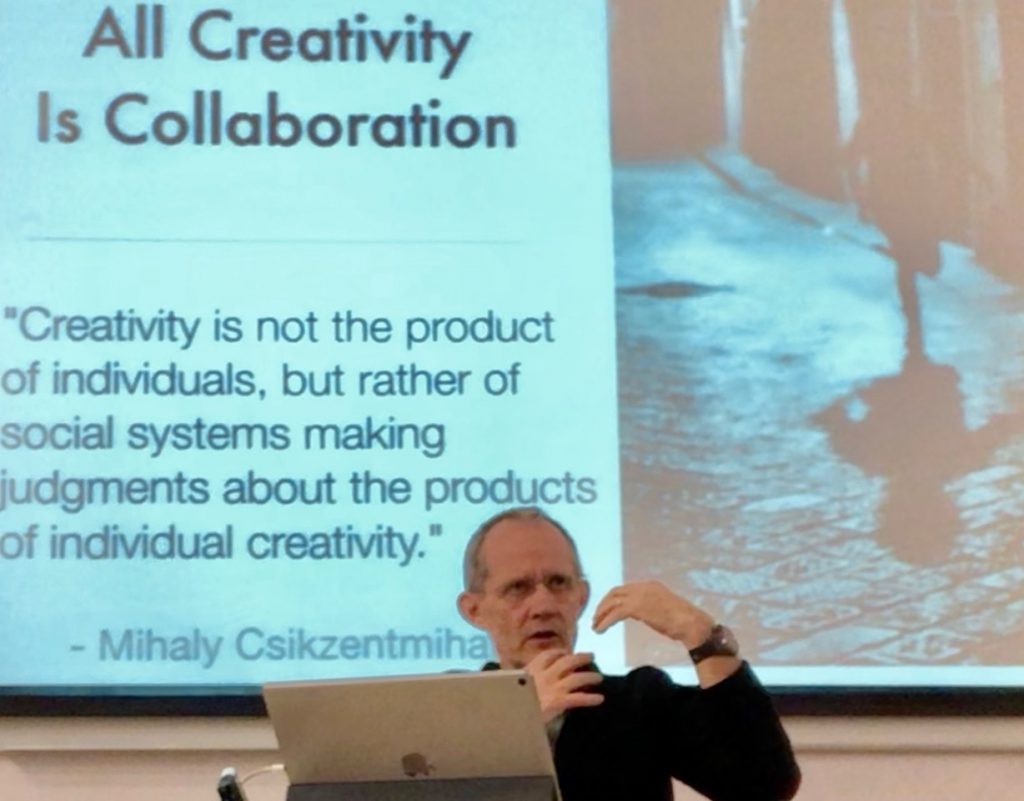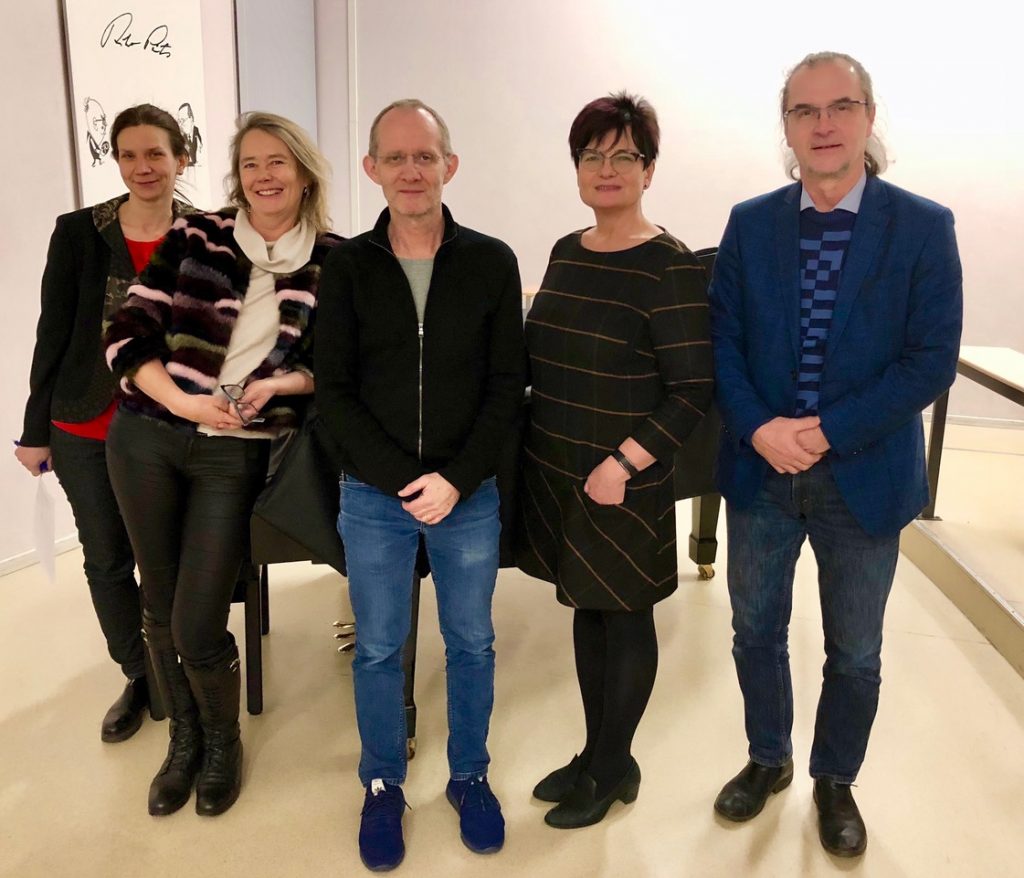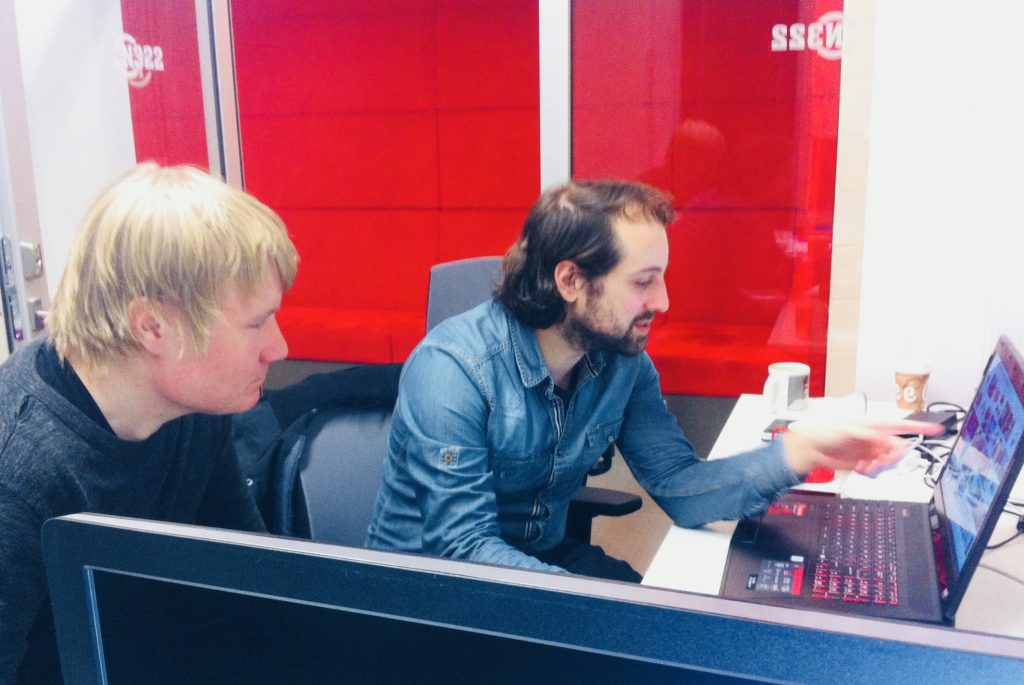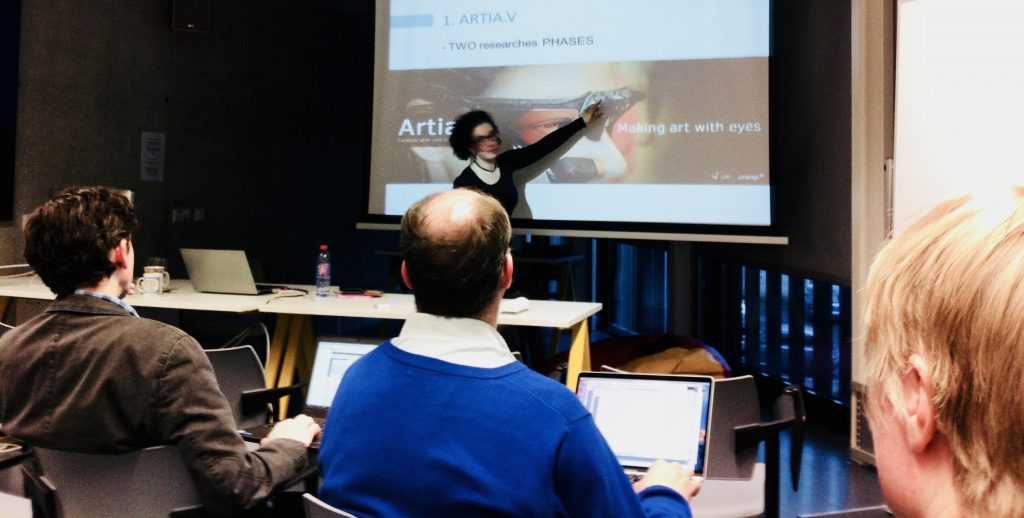Invited lecture and a collaboration meeting with professor Iiro P Jääskeläinen and Enactive Virtuality Lab May 21-22, 2019.
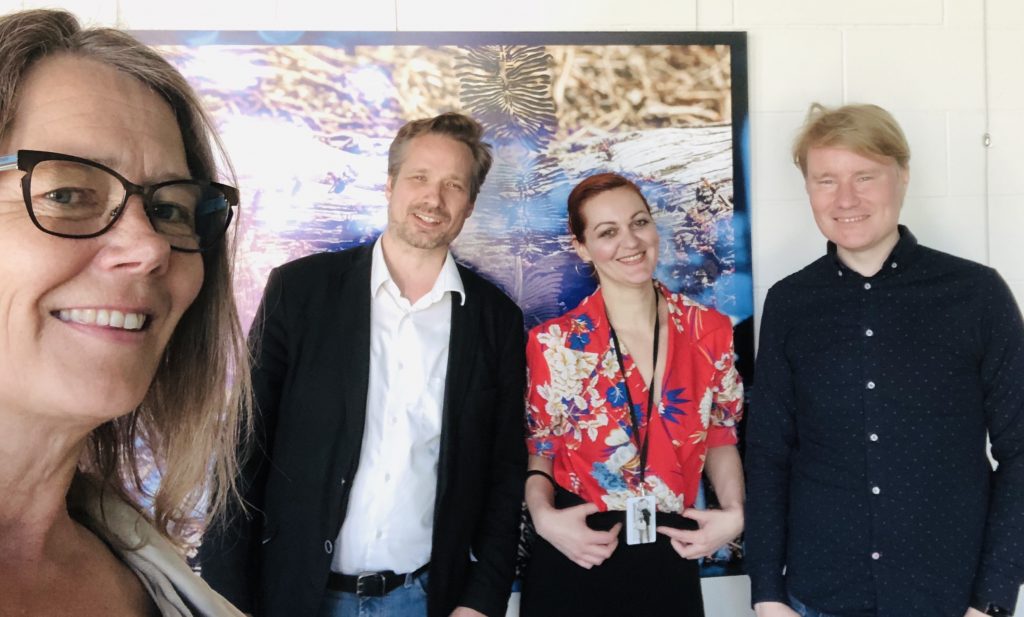
Image: Pia Tikka, Iiro P Jääskeläinen, Jelena Rosic, and Ilkka Kosunen at MEDIT meeting space.
May 21 at 3-4 pm Dr Iiro P. Jääskeläinen, Associate Professor of the Brain and Mind Laboratory, Department of Neuroscience and Biomedical Engineering, Aalto University School of Science, Finland,
gave an open neurocinematic talk on “Using movies as real-life like stimuli during neuroimaging to study the neural basis of social cognition” (room M-134).
Abstract:
Movies and narratives are increasingly used as stimuli in neuroimaging studies. This in many ways helps bridge the gaps between neuroscience, psychology, and even social sciences by allowing stimulation of, and thus also measurement of neural activity underlying, phenomena that have been less amenable to study with more traditional neuroimaging stimulus-task designs. Observation of signature patterns underlying discrete emotions across largely shared brain structures have suggested that both basic and dimensional emotion theories are partly correct. Robust differences in brain activity when viewing genetic vs. adopted sisters going through a moral dilemma in a movie clip have shown that knowledge of shared genes shapes perception of social interactions, thus demonstrating how neuroimaging can offer important measures for social sciences that complement the traditional behavioral ones. Furter, more idiosyncratic brain activity has been observed in high-functioning autistic than neurotypical subjects specifically in putative social brain regions when watching a drama movie. Development of data analysis algorithms holds keys to rapid advances in this relatively new area of research. Modeling the stimulus and recording brain activity is significantly complemented by behavioral measures on how the subjects experienced the movie stimulus.
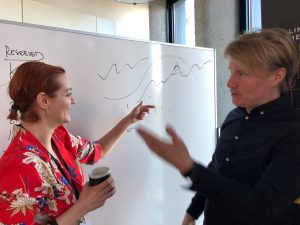

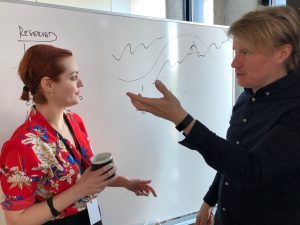
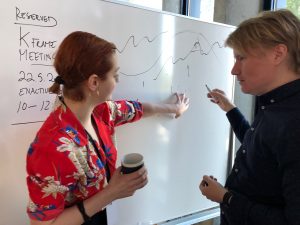
Image: Jelena Rosic and Ilkka Kosunen engaged in discussing correlations between ‘pheno’-dynamics and ‘neuro’-dynamics for our micro-phenomenological Memento study, a follow-up for Kauttonen et al 2018.
